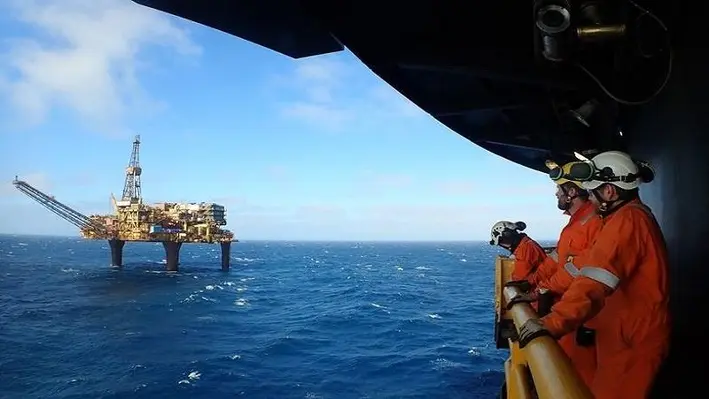

AF Gruppen, a leading contracting and industrial group, has been awarded a contract from TotalEnergies EP Nederland B.V. for the removal and recycling platforms in the Dutch sector of the North Sea.
The contract includes engineering, preparatory works, removal, transportation, recycling and disposal (EPRD) of 10 platforms with a combined weight of 17,000 tons.
AF Gruppen has developed the technology to be able to treat and recycle up to 80% of materials that otherwise would have been sent to a disposal site, pioneering itself as an industry leader in environmental solutions.
The project will start immediately after contract signing and is planned to be completed by the end of 2025. The platforms will be transported to the AF Environment Base Vats for recycling.
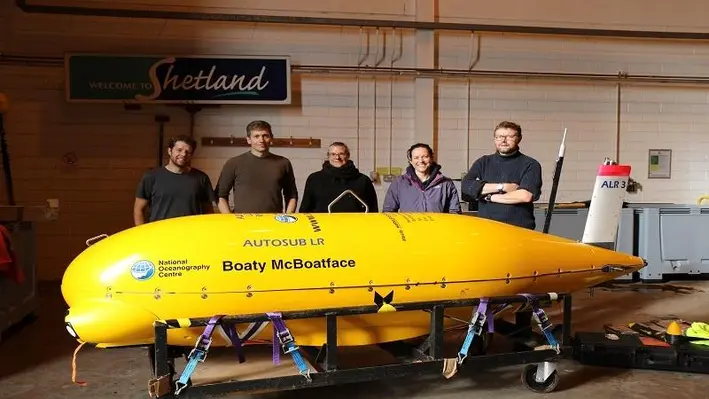

Boaty McBoatface, a robot submarine lovingly named through an Internet poll gone awry, is being utilised by the National Oceanography Centre (NOC) to conduct research on end-of-life oil fields off the coast of the Shetland Islands, North Sea.
The robot will be exploring several oil and gas structures in a bid to revolutionise the way marine surveys are conducted and ultimately protect the marine environment while helping the industry transition towards net-zero.
The Autonomous Techniques for infraStructure Ecological Assessment (AT-SEA) project, led by the NOC will trial the concept of using submarines like Boaty for high-tech, low-impact monitoring to pick up any potential environmental impacts at these industrial sites. This may eventually replace the current approach for environmental monitoring for decommissioning that requires dedicated ships and teams of people offshore.
The robots used will gather data on the water, pollutants and currents, as well as taking images of the sea floor. The team will test whether these robotic systems can gather equivalent information to the surveys currently done using ships. In doing so, emissions, risks and the cost of these operations will be significantly reduced in the future, thanks to the automated technology being developed at the NOC.
Project Lead for AT-SEA, Daniel Jones from the National Oceanography Centre, explained, “The overall goal of the project is to improve the environmental protection of the North Sea at a reduced cost and impact to the environment. We aim to demonstrate how this leading robotic technology from the NOC could be used worldwide to support this crucial ocean monitoring.”
There are currently thousands of oil and gas structures in the sea that are approaching the end of their lives – in UK waters alone there are nearly 500. As part of decommissioning, they typically need to be removed and the environment returned to a safe state. To ensure that no harmful effects will occur to the marine environment, decommissioning operations need to be supported by an environmental assessment and subsequent monitoring.
Dr Jones continued, “This technology has the potential to change the way marine surveys are carried out in the future. Autonomous submarines could offer many advantages over current approaches; improving the quality and quantity of environmental information while cutting the cost and environmental impact for a survey ship and its crew. The AT-SEA project will test this concept in UK waters and carry out the first fully autonomous environmental assessment of multiple decommissioning sites.”
As well as the decommissioned sites, the robot will visit a special marine protected area that is known to have natural leaks of gas, to check the robot can reliably detect a leak should one occur in the future.
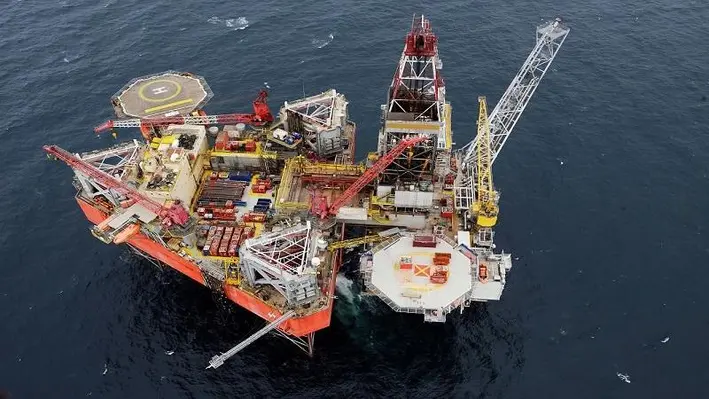
 Neptune Energy has announced the award of a US$30mn decommissioning contract to Well-Safe Solutions, for a campaign covering more than 20 wells located across eight Dutch and UK North Sea fields.
Neptune Energy has announced the award of a US$30mn decommissioning contract to Well-Safe Solutions, for a campaign covering more than 20 wells located across eight Dutch and UK North Sea fields.
It is the first multi-region, multi-well decommissioning campaign award by Neptune to a single rig contractor.
Well-Safe Solutions’ Well-Safe Protector jack-up rig will carry out the plug and abandonment of a minimum of four subsea and 17 platform wells located in Dutch and UK waters.
Neptune Energy’s Managing Director in the Netherlands, Lex de Groot, said, “Safely decommissioning assets at the end of their economic producing lives is an important part of our work. We plug and abandon wells, taking everything with us and leaving the seabed in a clean state. That is our responsibility and we don’t take it lightly.”
“Working with a single rig contractor for this extensive, cross-border decommissioning campaign is an innovative way to reduce time and cost.”
Duncan Morison, Rig Manager of the Well-Safe Protector, commented, “The Well-Safe Protector boasts a large volume of deck space for tubing, casing and conductor recovery, allowing effective batch operations and will help Neptune Energy realise considerable operational savings.”
The Well-Safe Protector is scheduled to mobilise in Q1 2023 to the Dutch and UK sectors for P&A operations in the fields.
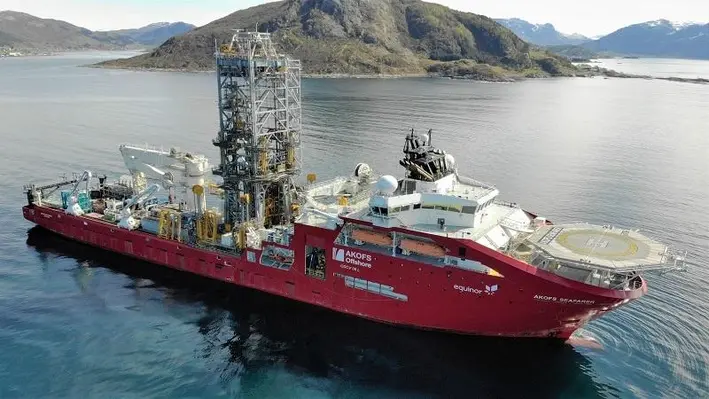
 The Petroleum Safety Authority Norway (PSA) has given its consent for Aker BP to use the mobile drilling facility AKOFS Seafarer for well intervention activities on the Skarv field.
The Petroleum Safety Authority Norway (PSA) has given its consent for Aker BP to use the mobile drilling facility AKOFS Seafarer for well intervention activities on the Skarv field.
The AKOFS Seafarer is owned by AKFOS Offshore which undertakes well intervention and subsea installations in Norway as well as internationally.
Located in the Norwegian Sea, the Skarv field has been developed with a floating production, storage and offloading vessel (FPSO) with five subsea templates with 15 wells. Work is ongoing to evaluate the potential of infill wells and other prospects in the area due to a decline in production.
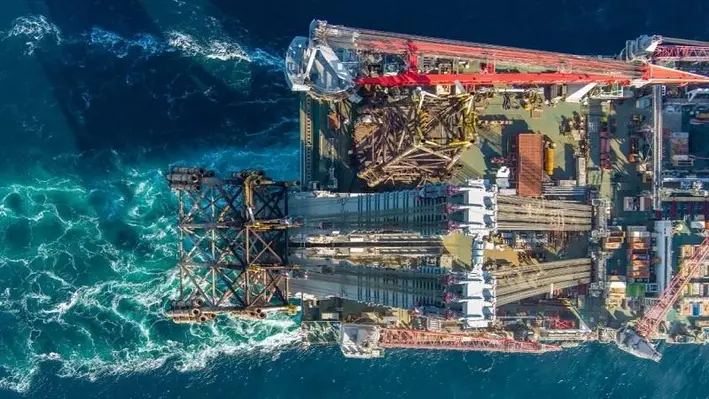
 Pioneering Spirit, the world’s largest construction vessel, has removed the West Alpha and East Alpha structures from the North Sea’s Tyra field and will deliver them for recycling at Frederikshavn, Denmark.
Pioneering Spirit, the world’s largest construction vessel, has removed the West Alpha and East Alpha structures from the North Sea’s Tyra field and will deliver them for recycling at Frederikshavn, Denmark.
The removal of the jackets concludes Allseas involvement in the Tyra Redevelopment Project. In total, Pioneering Spirit has removed more than 35,000 tonnes of offshore facilities from the field. The redeveloped Tyra II will continue the production of natural gas with 30% less CO2 emissions contributing to the energy security for Denmark and Europe.
2022 saw a record year for Pioneering Spirit. The vessel has lifted and transported approximately 115,000 tonnes of new and decommissioned facilities for the offshore energy industry.
Allseas’ role in the project covered engineering, preparation, removal and transportation to specialist dismantling yards of the complete East Alpha and West Alpha platforms, flare jackets, IPF and monopole.
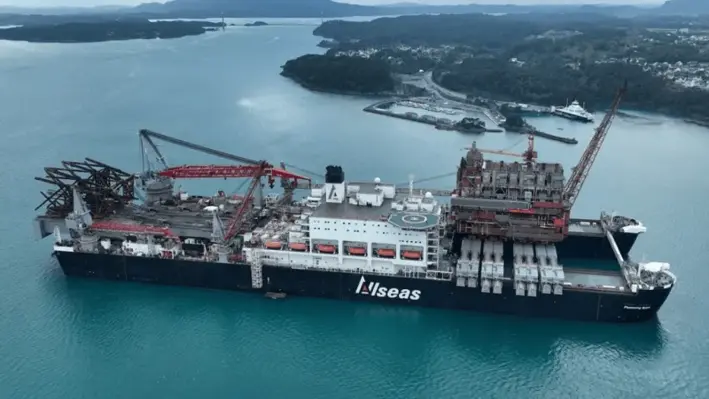

Allseas has been awarded a major decommissioning contract by TAQA UK for the removal and disposal of multiple northern North Sea facilities.
The engineering, preparation, removal, and disposal (EPRD) contract comprises TAQA’s Eider Alpha, Tern Alpha, North Cormorant and Cormorant Alpha platforms. The combined weight of the topsides and jackets to be removed is around 114,000 tonnes, making this the largest single offshore UK Continental Shelf (UKCS) decommissioning contract scope to date.
Allseas’ task is to remove four platform topsides, three steel supporting jackets and transport them to a suitable onshore yard facility for dismantling. It is hoped that at least 95% of the materials from the facilities will be reused or recycled.
The platforms are located close to each other, approximately 100 kilometres north-east of Shetland, in water depths ranging from 150 to 167 metres.
All structures will be lifted and removed to shore as single units using Allseas’ heavy lift vessel Pioneering Spirit.
Platform removals are planned post 2025.
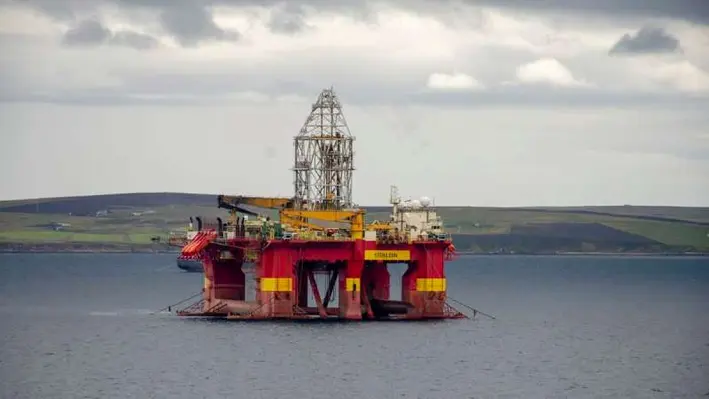
 Independent drilling contractors, Stena Drilling, has introduced a new well delivery and decommissioning service, Stena Wells, with the aim of combining the renowned drilling contractors with an experienced team of well delivery experts with promises of consistently providing their clients with safe, cost-effective and predictable outcomes.
Independent drilling contractors, Stena Drilling, has introduced a new well delivery and decommissioning service, Stena Wells, with the aim of combining the renowned drilling contractors with an experienced team of well delivery experts with promises of consistently providing their clients with safe, cost-effective and predictable outcomes.
The vision laid out by the company is to join forces with a pre-constructed team to deliver and execute all client expectations. Previously, operators will source external well construction and decommissioning activities, with the team having to familiarise themselves with the rig and the internal operations. By having a team already formed with the predetermined understanding of how operations are delivered, Stena Wells wants to remove that learning curve to enable a focused approach to operations.
In a video posted on their LinkedIn, director of Stena Wells, Dillan Perras, said, “Stena Wells comprises of two main elements; these are the building blocks of what we are trying to do. The first building block is Stena Drilling, a well renowned, international drilling contractor. The second part of the offering is the Stena Wells engineering team that brings a wealth of experience, knowledge, capabilities and competence. Stena Wells will provide the planning, the permitting, engineering, notification, construction or decommissioning of any well stock.”
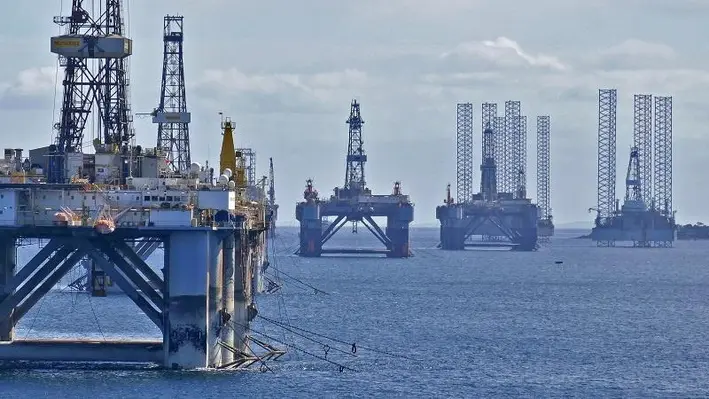

Spirit Energy Production (UK) ltd. has engaged ABL Group to provide marine warranty survey (MWS) and marine consultancy services for the operator’s decommissioning portfolio in the southern North Sea and the Irish Sea.
Spirit Energy has contracted ABL on a three-year contract (with three optional one-year extensions) to provide the marine warranty scope for the operator’s decommissioning campaigns.
ABL, which has provided a wide range of marine and engineering services for decommissioning operations in some of the world’s most complex offshore structures, will provide MWS services for decommissioning operations involving the removal of topside, and jackets for the following three offshore oil and gas platforms: Audrey A & B, and Ensign.
Ashley Perrett, Engineering Manager, ABL Aberdeen, commented, “ABL has considerable experience in supporting clients with the safe, efficient and optimised decommissioning of their oil and gas assets. Our long history in the sector, combined with our participation in a number of industry firsts within decommissioning, gives us unique insight into the range of challenges which can impact these complex marine operations.”
ABL’s MWS scope of work includes technical document and procedural review, on-site attendance and marine consultancy support for offshore operations during the campaign. Suitability surveying of the proposed fleet for the campaign is also part of the scope.

 Saipem S.p.A (Saipem) and Oil Response Limited (OSRL) have signed an extension of their existing Services Agreement to include the provision of FlatFish, Saipem’s underwater drone for environmental monitoring and inspection of asset integrity.
Saipem S.p.A (Saipem) and Oil Response Limited (OSRL) have signed an extension of their existing Services Agreement to include the provision of FlatFish, Saipem’s underwater drone for environmental monitoring and inspection of asset integrity.
The existing contract between Saipem and OSRL provides for the storage, maintenance, training of personnel and readiness including the remote emergency response of the Offset Installation Equipment (OIE). The OIE is a unique system designed to intervene in case of subsea well spills in shallow water (up to approximately 600 m water depth), when direct vertical access is not possible.
The expanded Services Agreement encompassed the deployment of FlatFish, the subsea drone developed by Sonsub, Saipem’s centre for underwater technologies and robotics, for a wide range of offshore tasks, including survey, leakage detection, through water column plume and dispersant concentration monitoring, environmental assessment and patrolling.
Furthermore, the Agreement allows Saipem to enlarge the fields of application of FlatFish, making a fundamental step towards its commercialisation on a global scale.
FlatFish is a part of Saipem’s Hydrone robotic development program, consisting of a series of subsea drones which are able to perform fully automatic inspection, surveillance, maintenance and rescue operations efficiently, safely and in an environmentally friendly manner. In particular, FlatFish is able to autonomously perform complex inspections of subsea assets, thanks to the robotic technologies it incorporates: from integrated artificial intelligence to advanced navigation.
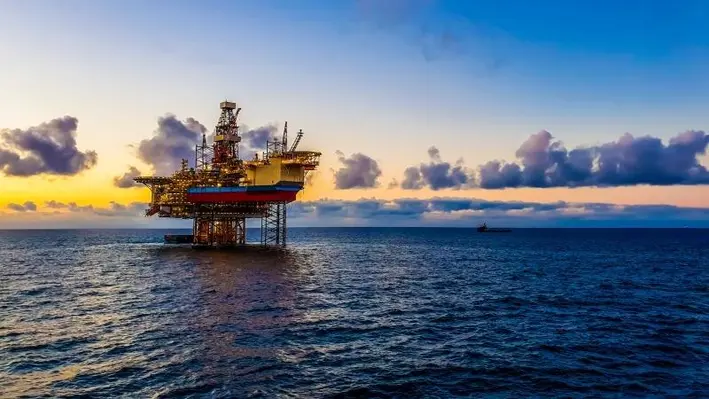

At the OWI MED 2022 conferenee, Abdullah Moustafa Mohamed Saad, Senior Production Technologist, Cheiron/Bapetco, will explain how changes in conditions lead to low and zero coat production gains.
The conference will be held in Athens, Greece, on 20 September 2022. The hottest talking points within the Mediterranean and North Africa region, along with the latest well intervention intelligence from the region will be discussed at the event.
Abdullah will help the audience learn about closed in gas wells in heterogeneous reservoirs and explore how changes in stimulation cost unlocks more economic potential.
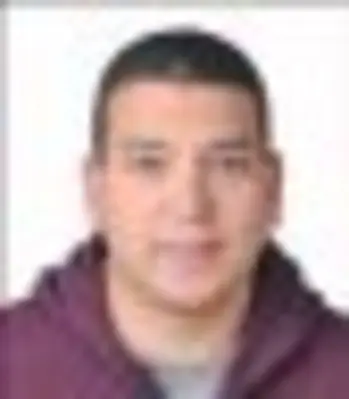
Through his presentation, he will make participants analyse artificial lift optimisation and cost changes and explain them the impact of reduced back pressures from years of production loss, that could help in intermittent operations.
Visitors at the event can explore well stimulation methods and effective production enhancement strategies to increase well stock value in mature wells.
Reach out to the details below:
Joseph Watson
Project Manager
T: +44 (0) 20 3409 5720
e:
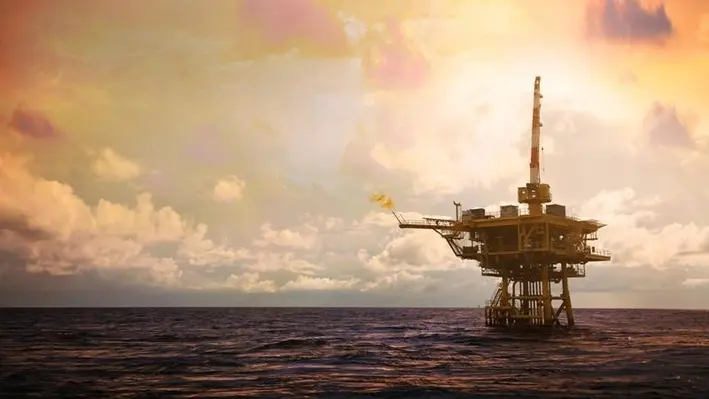

OWI MED 2022 is back as a live event after last year’s inaugural virtual launch. The conference will be held in Athens, Greece, on 20 September 2022. The hottest talking points within the Mediterranean and North Africa region, along with the latest well intervention intelligence from the region will be discussed at the event.
Eman Sayed Shahin, Performance Lead and Senior Petroleum Engineer from Dragon Oil, will be presenting a case study on the success of advanced reservoir management via an integration between real-time monitoring system and classical reservoir model, in the Gulf of Suez.
She will review how the J-100 well was equipped with a real-time automation system, which helped detect problems in the well and reduce delays in receiving data from periodic visits to the well.

Eman will explore how this integrated work-flow highlights the integration between real time remote monitoring systems in offshore fields and how this can add considerable benefits to the business.
Reach out to the details below:
Joseph Watson
Project Manager
T: +44 (0) 20 3409 5720
e:
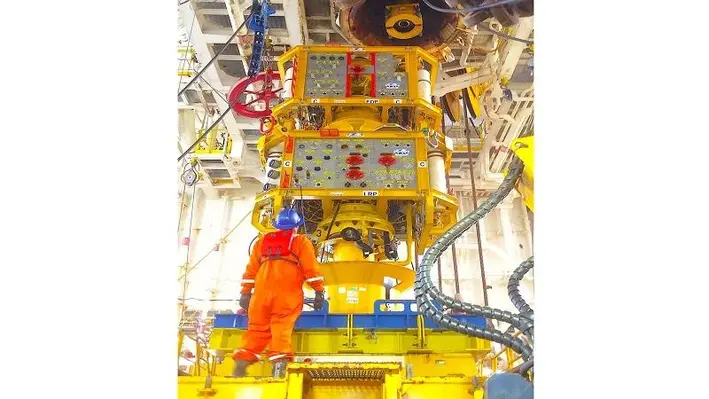

Well-Safe has awarded a contract to Trendsetter Engineering for the utilisation of the Trident Intervention System and technical services for abandonments in the UK, North Sea.
The system will be deployed from the Well-Safe Guardian rig to conduct a multi-well P&A campaign for an estimated 320 day duration.
Trendsetter owns and operates five 15,000 psi subsea intervention systems for hydraulic, riserless light well and intervention riser-based operations. Their flagship intervention system, TRIDENT, utilises advanced technologies to provide high-spec capability in a lightweight and modular package, furthering Trendsetter’s goal of bringing innovation to subsea intervention.
Mike Cargol, Vice President of Rentals & Services for Trendsetter Engineering, commented, “We are excited to work with Well-Safe to bring TRIDENT to the North Sea for plug and abandonment operations. We look forward to providing our value-added intervention services and are eager to identify additional opportunities for collaboration for our two companies.”
Neil Ferguson, Operations Director at Well-Safe Solutions, added, “Trendsetter is an ambitious partner with a strong track record of technical delivery around the world. Adding this capability to the Well-Safe Guardian unlocks considerable operational improvements and time savings for our clients during well intervention operations.”
Page 22 of 35
Copyright © 2025 Offshore Network